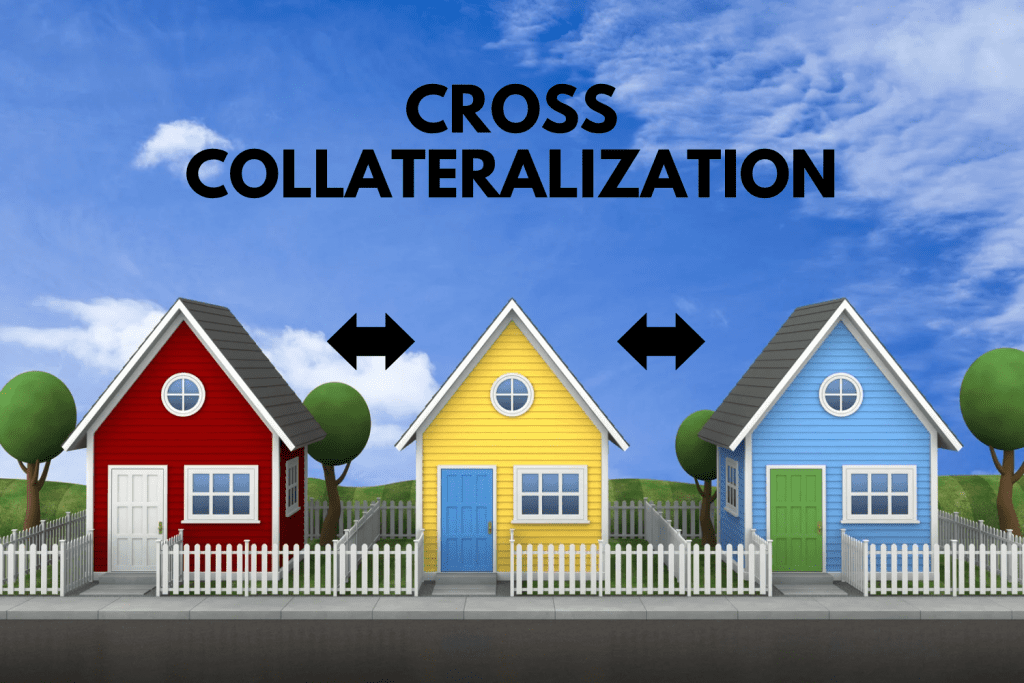
In the Australian property market, leveraging your assets to build wealth is a smart strategy. However, one tactic that often appears deceptively attractive is crosscollateralization i.e. using more than one property as security for a single home or investment loan. What may start as a shortcut to access funds can quickly morph into a financial trap. Let’s explore what crosscollateralization is, why brokers sometimes push it, its drawbacks, and smarter alternative approaches to manage your equity.
What Is CrossCollateralization?
Crosscollateralization (also called crosssecuritization) occurs when a lender ties two or more properties together as security for one loan or related loans. For example, you might use both your principal place of residence (PPOR) and an investment property as collateral for one consolidated loan, or multiple loans, with the same lender
While this structure can unlock borrowing power, especially if you lack cash for a deposit, it comes at the cost of flexibility. Your properties become entwined, and any change to one asset can have ripple effects on the rest .
Why Brokers May Encourage This Trap
Financial experts and commentators have flagged crosscollateralization as a frequent “mortgage trap,” especially for investors. Momentum Wealth reported on a real-life case where a homeowner’s PPOR was locked in with $600 k of investment debt—stagnating the borrower’s finance plans and placing their home at risk of forced sale. Despite this, many property buyers unknowingly fall into the cross-collateralization trap, often guided there by brokers who favor simplicity or lender incentives over long-term flexibility.
1. Simplified process
Using one lender and crosscollateralizing can be quicker and easier—just one loan application, one set of documents .
2. Better interest rates
Occasionally, brokers could secure a lower “owner-occupied” rate on your investment loan by packaging it with your PPORunder the same lender
3. Hidden commissions
There’s speculation that some brokers may push crosscollateralization for the sake of a smoother application flow rather than your long-term benefit
4. Lender-preferred
Banks typically promote this strategy because it more effectively secures their position and discourages you from refinancing elsewhere .
The Hidden Disadvantages
Let’s dive into why crosscollateralization can be more of a pitfall than a power move.
1. Locked-in Equity and Blended Valuations
If one property lags in value growth, it dilutes your ability to access equity from the higherperforming asset. That equity is effectively “locked together,” reducing your borrowing potential
2. No Control Over Sale Proceeds
Selling one property doesn’t mean you get its equity in pocket. The lender can distribute proceeds across your portfolio, even forcing you to cover shortfalls on other secured assets .
3. Reduced Flexibility in Refinancing or Selling
You’re tied to one lender. Refinancing one loan might require revaluing all linked properties, incurring additional cost and red tape . Selling could be impossible without lender approval .
4. Heightened Risk Exposure
If one property performs poorly or market conditions sour, your total LVR (loan-to-value ratio) across all secured properties may breach acceptable limits, placing your entire portfolio at risk.
5. Bargaining Power Is Reduced
With all properties bound under one lender, switching to a better deal becomes complex. The bank knows it holds the cards .
6. Hidden Fees & Lender-Mandated Structure
Removal of one property from the portfolio often triggers extra valuations, discharges, loan porting fees and sometimes they may even require a refinance of all secured assets
Better Alternatives to CrossCollateralization
You don’t need to resort to tying everything together. Here are smarter, cleaner ways to use your equity:
1. Work on Equity Strategically
Use tools like offset accounts, redraw facilities, or personal lines of credit against a single property to access equity without collateral entanglement. This enables flexibility and distinction between loans
2. Get It Out & Put It in a Separate Account
Refinance or take a home equity loan, then hold the funds in a separate transaction account. Use those funds to invest in a new loan —without cross-securitizing your existing security.
3. Use Equity to Purchase Another Property — Wisely
Use your PPOR’s equity as a deposit for a new investment property secured by that new asset alone. This guarantees each loan is tied to its own collateral, keeping your structures clean
4. Keep Transactions Clean, Loan by Loan
For each property:
• Take a loan secured by that property only.
• Maintain separate offset accounts/loan types.
• Access equity by refinancing only that property’s loan.
• This approach keeps negotiation power intact, refinancing easier, and reduces portfolio exposure.
5. Diversify Across Lenders or Use Portfolio Facilities

You can work with multiple lenders (very common in larger portfolios) or use a single portfolio facility that allows sub-accounts without tying securities together maintaining structural separation while simplifying credit relationships
Why Clean Loan Structures Matter
| Benefit | Explanation |
| Flexibility to sell | Without tie-ins, you can sell a property without lender approval or impacting other assets. |
| Unrestricted equity release | Access equity from growth without dragging poor-performing properties along. |
| Easier refinancing | Easier lender switch or product change without mandatory group revaluation. |
| Clearer accounting | Each loan’s interest and repayments stay neatly aligned with the security, simplifying tax and cashflow management. |
| Lower portfolio risk | If one property’s market dips, other assets remain shielded. |
How to Implement These Alternatives
1. Engage an investment-savvy broker or mortgage specialist
Advisors who specialize in multi-property portfolios understand the nuances of loan structuring beyond the “one & done” approach
2. Opt for standalone or portfolio facilities
One auditor-friendly structure is a portfolio loan which essentially means multiple sub-accounts under one overall facility with a single property as security. It still keeps each property’s equity distinct.
3. Proactively refinance
When equity in one property grows, refinance only that facility, and extract the equity. Deposit it into your offset account or use it to fund another property. Keep the security structures independent.
4. Employ offset/redraw facilities
Offset accounts linked to each loan reduce interest cost while keeping funds separate. Clean, efficient, transparent.
5. Regularly review your loan structure
Markets and personal circumstances change. A loan arrangement that made sense 5 years ago may not suit today’s goals. Annual reviews prevent structural traps later.
Final Takeaways
Cross-collateralization might seem like a convenient strategy to access more funds or secure a better deal on your home or investment loan, but the risks far outweigh the short-term benefits. By tying multiple properties together under one loan or lender, you lose flexibility, reduce your borrowing power, and expose yourself to unnecessary financial risks. If you need to sell one property or want to refinance for better terms, you’ll likely face obstacles, additional costs, and lender control over your proceeds. Fortunately, smarter alternatives exist. By using standalone loans for each property, accessing equity through clean refinancing, and leveraging offset or redraw facilities, you can keep your property transactions simple, flexible, and entirely under your control. The key is to maintain separation between loans and assets, giving you full autonomy over your growing property portfolio. Don’t fall into the trap of prioritizing short-term ease over long-term financial freedom structure your loans the right way from the start.


One Response
Pretty! This has been a really wonderful post. Many thanks for providing these details.
Comments are closed.